A teacup Labrador is a very small Labrador Retriever that has been selectively bred much smaller than the breed standard. Typical Labradors weigh between 55-80 pounds, while a teacup Lab will weigh 5 pounds or less when fully grown. Major kennel clubs do not officially recognize them.
Teacup Labs can be prone to more health problems due to their tiny size and rapid growth, including hypoglycemia, skeletal problems, and difficulty regulating temperature. They require extra special care and supervision compared to a regular Lab.
The term “teacup” is used by irresponsible breeders prioritizing profit over animal health. We’ll cover everything about these miniature labrador retriever puppies, from breeding methods to appearance and potential health issues.

are there miniature labrador retrievers?
These are dwarf Labradors that have been bred to be smaller in size than the regular breed. Let’s know more about them.
Miniature Labrador: Origin
Similar to the labrador, the miniature lab originated in Newfoundland, Canada. While today we may see several labrador colors, black was popular initially. Black was the most desirable labrador color in the hunting community. The miniature lab brings in a bit of controversy when discussing hunting dogs.
Miniature labs were often referred to as labs with dwarfism. It is a common health issue arising from unscrupulous breeding practices. While it is challenging to date the arrival of the first miniature labrador, dwarfism has been common in this breed. Miniature labs with proper breeding papers and parents’ dog information are open to registration. However, they remain outside the show ring.
miniature labrador Size And Characteristics
Miniature Labradors weigh 20 to 40 pounds less than labrador retrievers. They are three inches shorter than full-sized labs, making them the smallest labrador type. Despite their size, they possess characteristics of a standard Labrador – loyal, friendly, and intelligent. Their compact size makes them an attractive option for those living in apartments or smaller homes.
Always be cautious when buying a miniature labrador. Some breeders crossbreed runts or introduce dwarfism, resulting in serious health issues. A reputable breeder maintains quality standards.
mini labradors Shedding
Like their full-sized counterparts, a miniature labrador can shed quite a bit. Their double coat helps regulates their body temperature in cold water and harsh weather conditions.
Regular brushing minimizes shedding and keeps the coat healthy. Labs shed excessively during seasonal changes, so be prepared for extra grooming.
Owners worried about allergies may consider getting miniature labs because of their smaller size. However, even small dogs can produce allergens through skin flakes and saliva. If allergies are of particular concern, try Bichon Frise or Poodles.

Purebred Status of dwarf labrador retriever
The American Kennel Club (AKC) does not recognize these miniature labrador puppies as a separate breed. They are regular Labrador Retrievers selectively bred for a smaller size.
Unscrupulous breeders market them as high-priced designer dogs to buyers. Purchase only from those who follow ethical breeding practices. Despite not being purebred, these miniature dogs exhibit many full-sized Labrador traits. They have a friendly disposition, are easily trainable, and love water. Variation in temperament among Mini Labs is seen due to mixed breeding.
Miniature Labrador Retriever Breeding Methods
Breeding runts, mixing with toy breeds, dwarfism, etc., are used for breeding teacup dogs.
Breeding Runts
The most common method irresponsible breeders use to create dwarf Labradors. “Runt” refers to the smallest puppies from a litter. Some breeders selectively breed them with other small dogs to reduce their size. It results in limb malformation, hip dysplasia, and intervertebral disc disease.
Genetic testing is an essential component for healthy offspring, per AKC. Enquire about it from the breeders. However, there is no guarantee that breeding runts result in small-sized puppies. It can produce regular-sized pups.
Malnourished labs with stunted growth are often used in this process. Such puppies may experience vitamin D deficiency, compression fractures, and more in later life. With the rise in popularity of mini-labs, irresponsible breeders produce small labs with unhealthy runts.
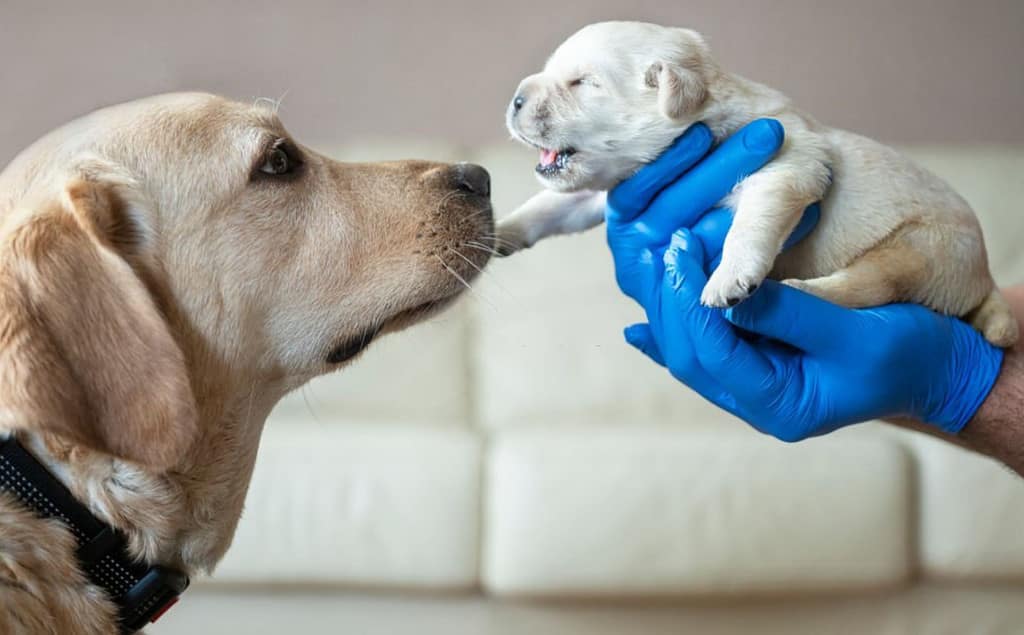
Mixing With Toy Breeds
Another breeding method is mixing them with a toy poodle or Spaniel. This method produces a smaller dog than the standard Labrador Retriever. There are concerns about these mixed-breed dogs’ health and genetic stability.
While mixing toy breeds may produce small dogs, they should not be promoted as purebred mini labs. Also, such crossbreeding needs experienced professionals for the best results. Ensure the breeder is certified and knows the associated dog breed background properly.
Dwarfism Introduction
Dwarfism is the final method of breeding mini labs. It incorporates a gene that stunts the puppy’s growth. Dwarf labradors often suffer from health problems like skin and coat abnormalities. Dwarfism results in shorter lifespans.
SD1 and SD2 are two genes responsible for dwarfism in labs. The former results in labs with bent or curved legs, while the latter hinders bone development. When both parent dogs inhibit dwarf genes, the litter automatically results in dwarf labs. With these genes, the offspring may not develop as a typical lab
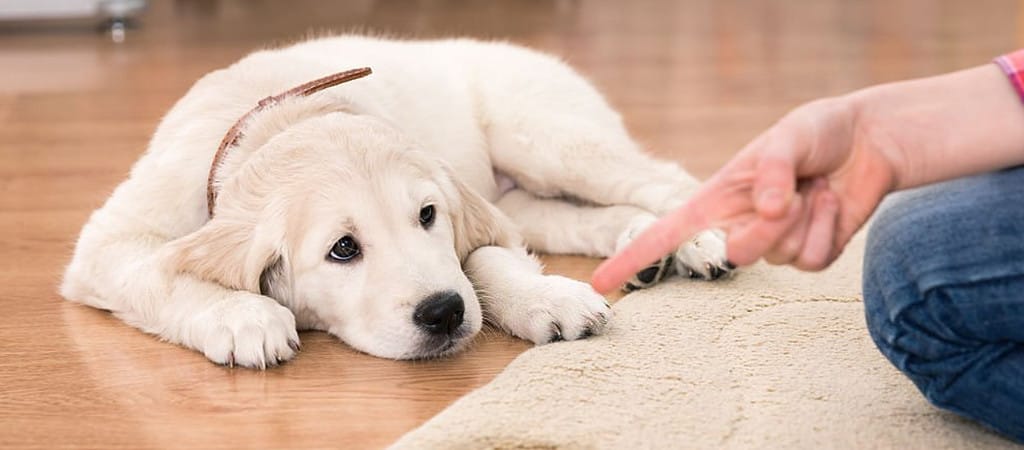
A Mix Of Methods
Miniature Labradors are bred using various methods to achieve their smaller size. Breeding methods that intentionally create miniature versions of purebred dogs have faced criticism.
They prioritize looks over the dog’s quality of life and health. These hybrid dogs look adorable and make excellent lapdogs. Choose reputable breeders who prioritize their dog’s overall well-being.
Appearance Of the labrador teacup
Mini Labs come in various coat colors and textures with distinct physical features.
small size labrador Coat Color And Texture
The common lab color is black, but chocolate and yellow are also popular. Miniature Labradors have short or longhaired coats that are dense, thick, and water-resistant coats.
Besides standard coat colors, some breeders offer rare colors like silver, charcoal, and champagne. Be cautious when searching for a specific color. Don’t fall victim to inbreeding.
miniature labrador weight and Physical Features
A mini Labrador has a sturdy build, broad head, and strong jaws. They also feature droopy ears, almond-shaped eyes, and a sleek short or medium-length coat.
Mini Labs are slightly smaller than regular Labs but retain their muscular physique. Regarding height and weight, they range from 11 to 16 inches and weigh between 25 to 60 pounds.
Despite their small size, they possess great strength thanks to their stout legs and stocky body frame. These features make Miniature Labradors easy pets that adapt well to any environment.

Teacup Vs. Miniature Labrador Retriever
The teacup Labs are the smallest type of Labrador. They are a few inches shorter and lighter than other Labs.
Size Comparison
A teacup labrador retriever is meant to be even smaller than a miniature labrador. Mini labs are already the smallest version of the standard labrador retriever. Hence, size is the most significant difference between a teacup and a mini labrador.
Differences In Temperament of labrador with dwarfism
Teacups and miniature Labs may be smaller but have the same gentle temperament as regular Labrador retrievers. They are loyal companions.
They have a higher tendency towards anxiety and fear. It makes them a bit skittish around strangers. If you’re considering adopting a Teacup Labrador, remember that every dog has its unique personality.
The dog’s size does not determine temperament, so spend time before deciding. Proper training and early socialization develop well-rounded personalities.
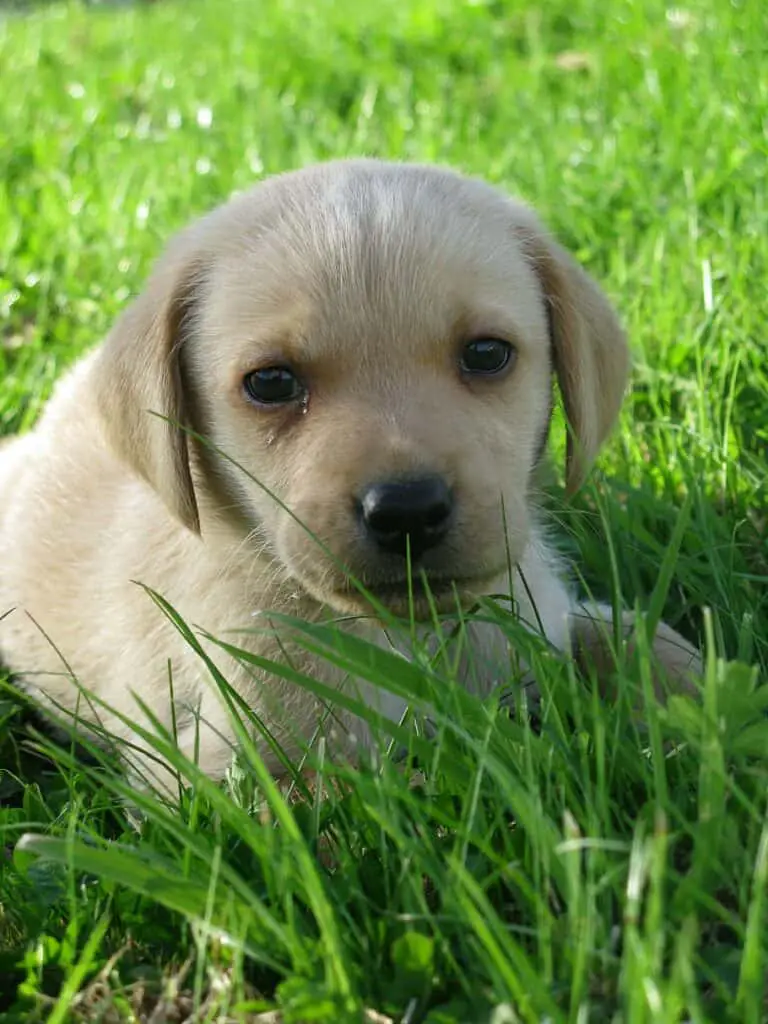
Health Issues Of Teacup Labs
Teacup dogs are prone to health issues like limb malformation, hip dysplasia, intervertebral disc disease, and obesity.
Limb Malformation
Limb malformation is a serious concern for Teacups. Miniature versions of this breed are bred to be smaller, but irresponsible breeding practices cause genetic disorders.
This condition causes bent or malformed legs, affecting the dog’s ability to move. Always inquire about the genetic history of both parents before getting a Teacup home. Don’t forget proper nutrition and regular exercise.

Hip Dysplasia
Hip dysplasia is a genetic disorder affecting large dog breeds like Labradors. The hip joint does not develop properly and becomes loose and unstable.
This leads to arthritis and chronic pain later in life. Get your dog from those who screen their breeding dogs. Maintaining a healthy weight and regular exercise reduce the risk of developing hip problems. Medication or surgery can come into play.
Intervertebral Disc Disease
Intervertebral disc disease (IVDD) is another common health issue in Teacups. When the cushion-like discs between vertebrae in the spine deteriorate or rupture, it leads to nerve damage and pain.
Symptoms include difficulty walking, dragging limbs or paralysis, and losing bladder or bowel control. It is common among smaller dog breeds like Teacups due to their long backs and short legs. Regular exercise and a healthy diet benefit the prevention of IVDD.
Obesity
Since they are smaller, many often assume they require less food and exercise than regular-sized Labs. But, Teacup Labs have a faster metabolism rate and require more energy-dense diets.
Obesity in Teacup Labs leads to joint pain and arthritis, heart disease, diabetes, and reduced life expectancy. A well-balanced diet with high-quality proteins, carbohydrates, and healthy fats is needed. Daily walks or swimming help keep their muscles strong and agile.
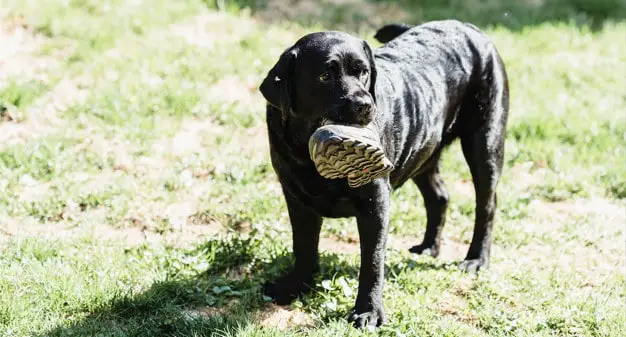
Problems Associated With Dog’s Tiny Size
With the tiny size of a dog comes several health problems, especially teacup labs. From fragile bones to hypoglycemia, there are ample concerns. They can be affected by mitral valve disease, heart defects, seizures, blindness, hydrocephalus, dental diseases, etc. Besides these major issues, teacups or tiny labs may struggle to regulate body temperature. They can quickly become too cold, resulting in hypothermia.
What Is Meant By Hybrid Vigor?
As per the Hybrid Vigor theory, mutts and crossbreeds are considered healthier. It is because they have a wider gene pool than the purebreds. In reality, it is challenging to pinpoint the conditions the offspring may inhibit due to the huge list of health problems in hybrid parent breeds.
Reasons To Avoid Getting Miniature Labs
Health Concerns
While mini-labs may look cute and cuddly, they suffer a lot. These smaller dogs are more prone to limb malformation. Besides, hip dysplasia is a common issue among all Labradors. Intervertebral Disc Disease (IVDD) and obesity are other problems in small dogs.
Educate yourself on these issues before making a final decision. Ensure your pup gets regular check-ups from your veterinarian. Proper nutrition and interactive puzzle toys keep them stimulated.
Breed Standard
Regarding breed standards, Labradors should be a certain size to meet AKC’s guidelines. According to the AKC, female Labradors should be between 21.5 and 23.5 inches at the withers, while males should fall between 22.5 and 24.5 inches in height.
Teacups or miniature Labradors do not conform to these standards. Few dog breeders purposefully breed smaller Labs for those who live in apartments. The terms “teacup” or “miniature” labs come from irresponsible breeders looking for a quick profit.
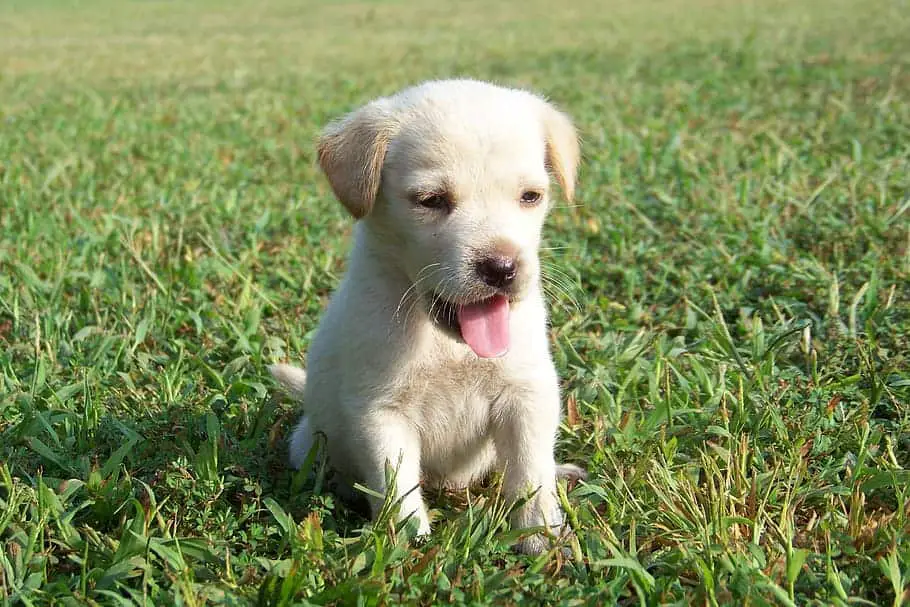
Alternatives To mini labrador retriever
If you’re looking for a dog smaller than the average Labrador, there are other breeds to consider. Miniature Poodles, Cocker Spaniels, and Beagles are good alternatives.
Miniature Poodles
A small dog breed that is smart, easy to train, and hypoallergenic, Miniature Poodles are perfect. These adorable dogs usually weigh 10-15 pounds and stand around 10-15 inches tall.
They are good for apartments or cities. Unlike Teacups, Miniature Poodles are purebred dogs recognized by the AKC. They have a long history of being successful show dogs.
One advantage of owning a Miniature Poodle over a Teacup Lab is their health. Poodles have fewer serious health problems. Miniature poodles have an average lifespan of 12-15 years which is higher than most other small breeds or toy-sized mixes.
Cocker Spaniels
Cocker Spaniels are another excellent alternative for those who want a smaller dog breed. They weigh between 20 and 30 pounds, about half the size of a regular Labrador.
They are ideal for apartment living or families who prefer dogs that can be easily carried around. Cocker Spaniels have long hair that requires regular grooming to prevent matting and tangling.
Their coats come in many colors, including black, buff, red, and chocolate. They make great family pets, are loyal, and are gentle with children. Like all breeds, they are prone to ear infections and hip dysplasia.
Beagles
Beagles are a popular alternative to the Teacup dog breed. These small hound dogs are friendly, energetic, and great for families with kids. They weigh 20-30 pounds and stand around 13-15 inches at the shoulder. It makes them smaller than a full-sized Labrador.
Their size makes it easier to manage in urban areas or small apartments. They often shed and need regular grooming. Beagles are prone to hip dysplasia and obesity.
Havanese
Native to Cuba, Havanese is another great alternative. With big, brown eyes, they are excellent sociable companions. These dogs are available in various colors like white, cream, chocolate, fawn, etc. With small and sturdy bodies comes their adaptable nature. These small dogs can be prone to heart murmurs, eye disorders, deafness, etc.
Pros And Cons: Teacup Labrador
| Pros | Cons |
| 1. Requires less space. | 1. They may suffer from various health issues. |
| 2. Needs less care regarding exercise and grooming. | 2. These tiny dogs have a short life expectancy. |
| 3. They are not too expensive. | 3. Finding a healthy teacup labrador is very challenging. |
| 4. These mini labs will require less food than large dogs. | 4. They may take longer to get trained. |
Is the Pocket Lab Dog Right For You?
Considerations Before Adopting
Consider your lifestyle and whether you can accommodate the needs of a mini labrador breed. Labs require plenty of exercise and attention.
A Labrador isn’t the right fit if you have a busy schedule or live in enclosed spaces. Another consideration is the cost associated. Miniature Labs may come at a higher price due to their breeding methods and reputability.
They require regular check-ups with vets, quality food, and toys to improve their cognitive functions.
Labradors get along well with cats or other dogs. Introduce them slowly, so they accept each other faster. Always take these factors into account before speaking with labrador breeders. AKC’s registered breeder network provides reputable health testing advice and more.
These dogs thrive in active households where they can get plenty of exercise and playtime. They are social animals who need regular interaction with their owners and other pets.

Where Can I Buy A Teacup Labrador And How Much Does It Cost?
Finding miniature labrador breeders is the first step. Search online for breeders specializing in miniature labradors or with experience breeding smaller-sized Labs. Be wary of breeders who use the term “teacup.” It is often a red flag for irresponsible breeding practices.
The purchasing cost depends on the breeder, location, and dog’s pedigree. On average, you can expect to pay anywhere from $1,000 to $3,000 for a Miniature Labrador puppy. The initial cost of buying a dog is just the beginning. Caring for your Teacup Lab includes expenses like food, vet visits, and toys.

FAQ
How big does a teacup labrador retriever get?
Teacup labradors weigh fewer than 5 pounds as adults. They grow a maximum of 17 inches tall. The exact sizes vary based on the breeding approach. Breeders aim to create a dog the same size as a puppy throughout their life.
Is there such a thing as a mini Labrador?
A mini labrador does exist. Also known as dwarf labradors, they are produced from two labrador parents carrying genes for dwarfism. Dwarf labradors usually have bent legs.
What is the smallest Labrador in the world?
A miniature labrador is considered the smallest labrador retriever. They are about 19 to 22.5 inches tall. In extreme cases, they can be as short as 17 inches.
How long do mini Labradors live?
The average labrador retriever’s life expectancy is about 10 to 14 years. Factors like genetics and environment significantly contribute to it. The same is true for a mini labrador.
How big does a runt Lab get?
As per AKC, male labrador retrievers can weigh between 65 and 80 pounds and get 22 to 25 inches tall. While females are 55 to 70 pounds and 21 to 24 inches tall.
Why is my 6-month miniature small?
Mini labradors are smaller than average but do not remain small to a miniature extent. Small lab puppies mean they are undernourished or are suffering from an illness.
Do smaller Labs live longer?
Generally, smaller dog lives longer than their larger counterparts. Besides, mongrels live about 1.2 extra years than pedigrees.
what is a canoe labrador?
A canoe Labrador is a smaller breed of Labrador Retriever bred specifically for canoeing. They are between 35 and 50 pounds, smaller than the standard Labrador Retriever, which can weigh up to 80 pounds.
This smaller size makes them easier to bring in and out of a canoe without capsizing it, and they also bring less water back into the canoe when they jump out.
Author Profile
- Site Owner And Dog Lover
-
Aritra, the founder of Labradorandyou.com, is a lifelong dog lover whose passion ignited for Labradors for their loyalty and intelligence. With extensive research and personal experiences, Aritra has become a Labrador expert, offering a rich resource on the breed. Labradorandyou.com provides reliable, timely, and evidence-based information, including Labrador-specific product reviews, training techniques, and care tips.
Labradorandyou.com was born out of Aritra's passion and his desire to share his profound knowledge about the breed. The site serves as a comprehensive resource, offering a wealth of up-to-date information for Labrador owners and enthusiasts alike
Also by the author
-
 Lab-TypesNovember 17, 2023Old Dog Seizures: Causes, Symptoms, and Treatment Options
Lab-TypesNovember 17, 2023Old Dog Seizures: Causes, Symptoms, and Treatment Options
-
 Lab-TypesNovember 17, 2023Why Is My Dogs Poop Yellow? 8 Reasons & Solutions
Lab-TypesNovember 17, 2023Why Is My Dogs Poop Yellow? 8 Reasons & Solutions
-
 ReviewsNovember 17, 2023The Only Hill’s Science Diet Review You Need To Read
ReviewsNovember 17, 2023The Only Hill’s Science Diet Review You Need To Read
-
 Lab-TypesNovember 17, 2023How To Adopt An Emotional Support Dog?
Lab-TypesNovember 17, 2023How To Adopt An Emotional Support Dog?





